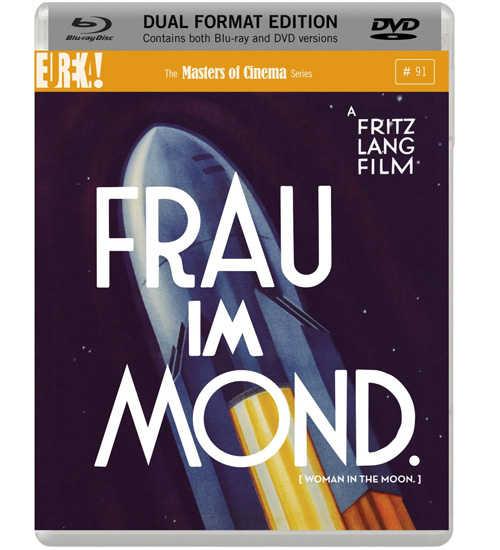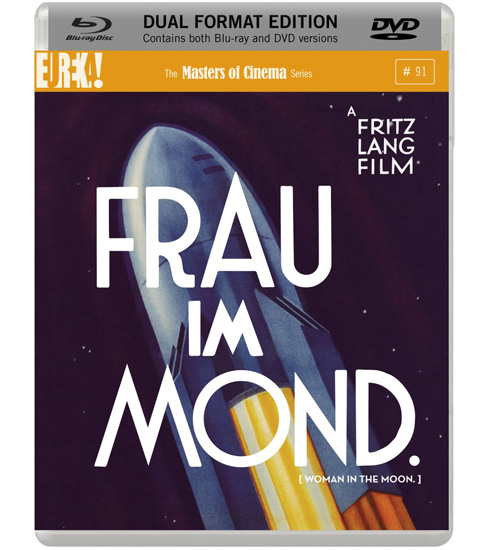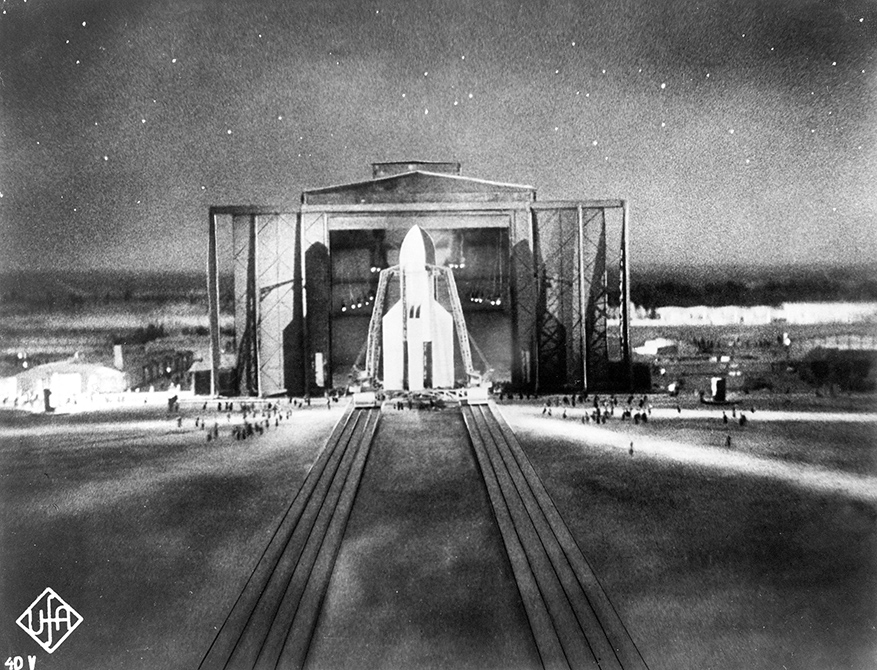Woman in the Moon (1929) | Dual format release – Fritz Lang’s final silent epic is cinema's first real space exploration film


THE SYNOPSIS In the hope of plundering the moon’s vast, untapped gold reserves, a cartel of industrialists covertly finance a manned space mission headed up by a visionary scientist (Klaus Pohl). Joining him is student astronomer Friede (Gerda Maurus) and two young men courting her (Willy Fritsch and Gustav von Wangenheim), an unscrupulous American (Fritz Rasp) and a young stowaway (Gustl Stark-Gstenttenbauer). But when the rocket finally reaches the far side of the Moon, the team find themselves stranded in a lunar labyrinth, where emotions run scattershot, and the new goal becomes survival.

THE LOWDOWN Two years after lensing his science-fiction masterpiece, Metropolis, Fritz Lang returned to the genre for his final silent epic Woman in the Moon, based on his wife Thea von Harbou's 1928 novel Die Frau Im Mond.
Lang's film adaptation, which links the opening of the Moon as a territory with a gold rush, was as accurate as the technology of the day would allow, and is considered the first serious space exploration film. It’s also here that the countdown was invented - strictly for dramatic effect. The pioneering director takes great care to make the details of his story as real and as state of the art as possible. And he does so with documentary precision, even anticipating how a lunar rocket would have to be moved to its launch pad. While some of its scientific notions are flawed (von Harbou gives the moon atmosphere for one), the film has great technical skill and inventive direction. The script however is another matter. Boasting a heady fusion of espionage tale, serial melodrama, and comic-book sci-fi, it should be great fun, but its actually a bit leaden, overly sentimental and confusing in parts (and some of the scenes do go on a bit).

While the sci-fi's serious themes (like man's hubris) don't have the same dazzling and disturbing impact as the social and political concerns underlying Metropolis, Lang's film spookily foretold Germany’s wartime push into rocket-science and was inventive enough to force the Nazi’s to withdraw the film from distribution and destroy the film's spaceship model in order to keep their development of the V1 and V2 rockets a secret. Assisting with the special effects is acclaimed abstract artist, Oskar Fischinger, who created one of the sequences in Disney’s Fantasia (1939), while the film’s scientific advisor was German physicist Hermann Oberth, who is regarded as the founding father of rocket science. Another advisor Willy Ley later wrote Conquest of Space, which was filmed in 1955.

THE DUAL FORMAT RELEASE Restored to its near-original length, Frau im Mond is released in a dual format special edition in the UK as part of Eureka Entertainment’s The Masters of Cinema Series.
SPECIAL FEATURES • 1080p transfer on the Blu-ray of the 2000 FW Murnau-Stiftung restoration • Original German inter-titles with newly translated optional English subtitles • The First Scientific Science-Fiction Film German documentary about Frau im Mond http://youtube.com/v/kXQEHDyCCTs
The latest updates, reviews and unmissable series to watch and more!

